¶ User pool with unified domain name
By default, the user pool created in GenAuth does not use a unified third-level domain name. However, in some special scenarios, you may need to use a unified domain name for the entire user pool (that is, all applications in the user pool use a unified, user pool-level domain name).
To clarify the actual needs of this feature, please follow the steps below to compare your usage scenarios and make a choice:
¶ Step 1: Understand what a unified domain name is
There are many types of applications in the user pool of GenAuth, including: self-built applications, integrated applications, and application panels that can accommodate these two types of applications for single sign-on (SSO). By default, the above types of applications in the GenAuth user pool use independent third-level domain names (xxx.authig.cn). You can independently modify the authentication address of any self-built application and application panel.
In contrast, a unified domain name means that all types of applications in the same user pool use the same third-level domain name. After creating such a user pool, you can modify the unified third-level domain name of this user pool in the User Pool Settings->Basic Settings->Basic Information tab. Your changes will take effect on all applications in the user pool at the same time, and different applications will be distinguished by splicing App ID after the authentication address (xxx.genauth.ai/APP_ID).
¶ Step 2: Determine whether you need to use a unified domain name
¶ When do you need to use a unified domain name?
- You want the third-level domain names of all applications in the user pool to be modified uniformly.
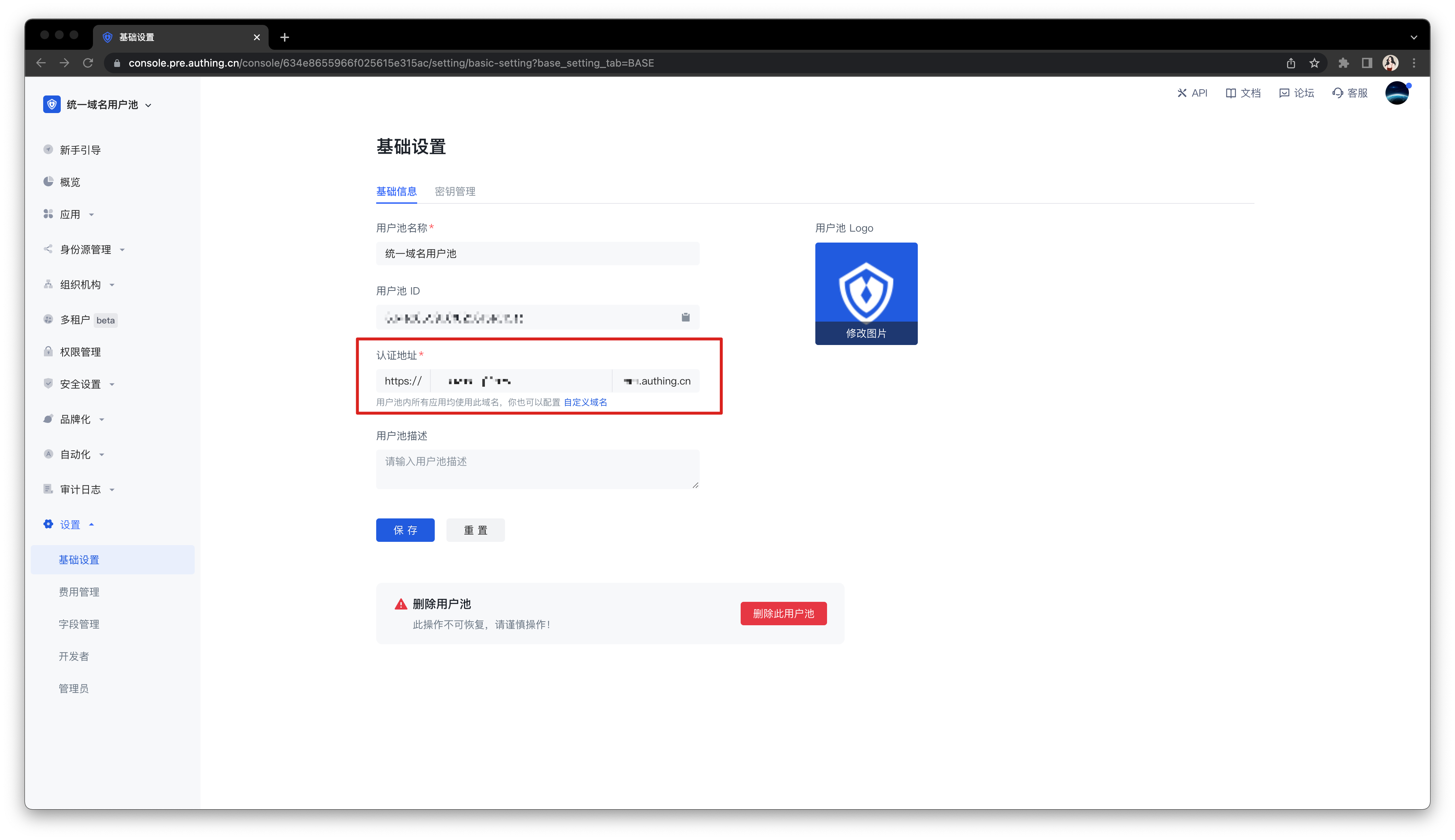
You want to use the custom domain name function in the entire user pool.
- Use a custom domain name in the application panel.
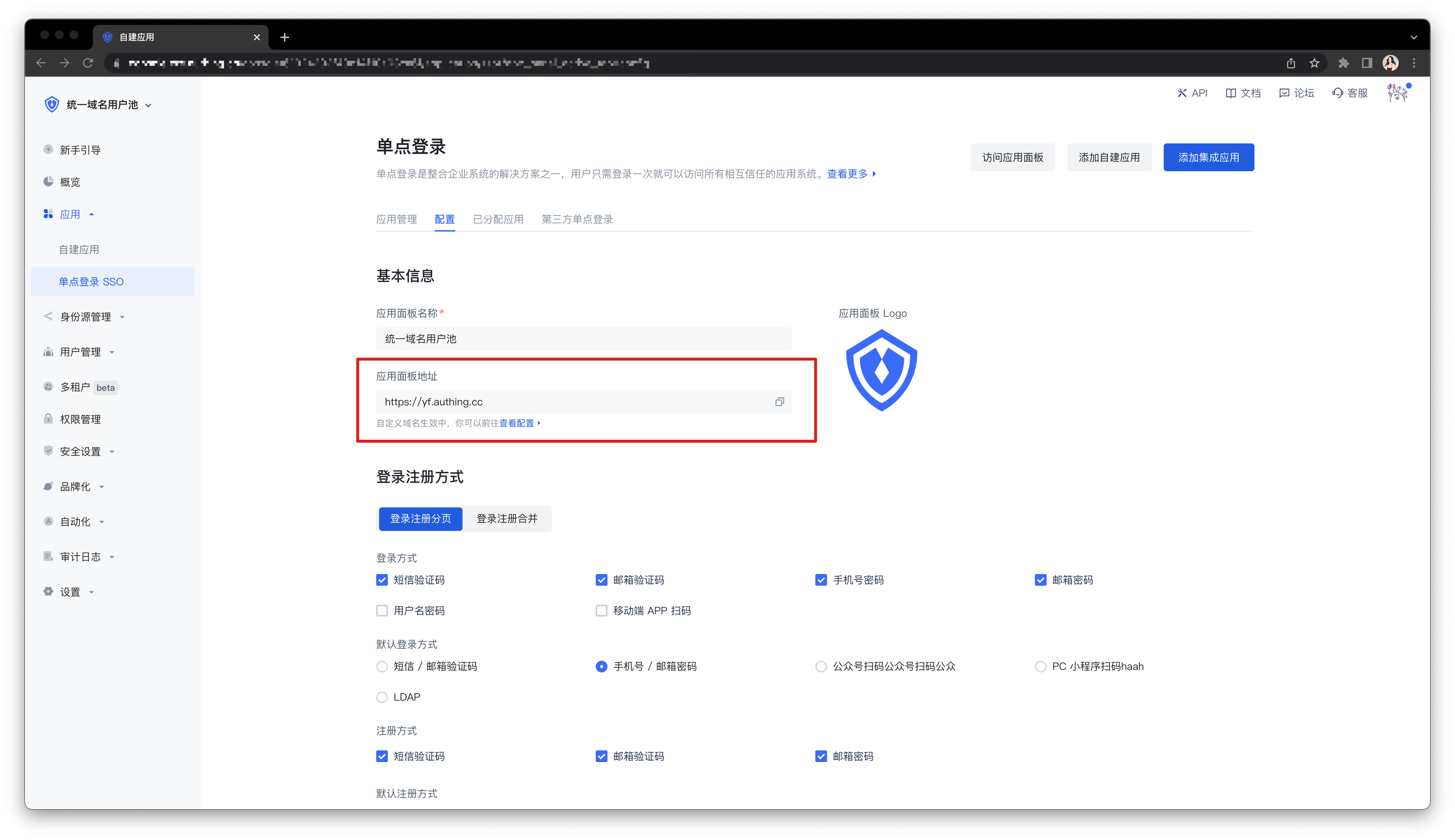
- Use a custom domain name for self-built applications.
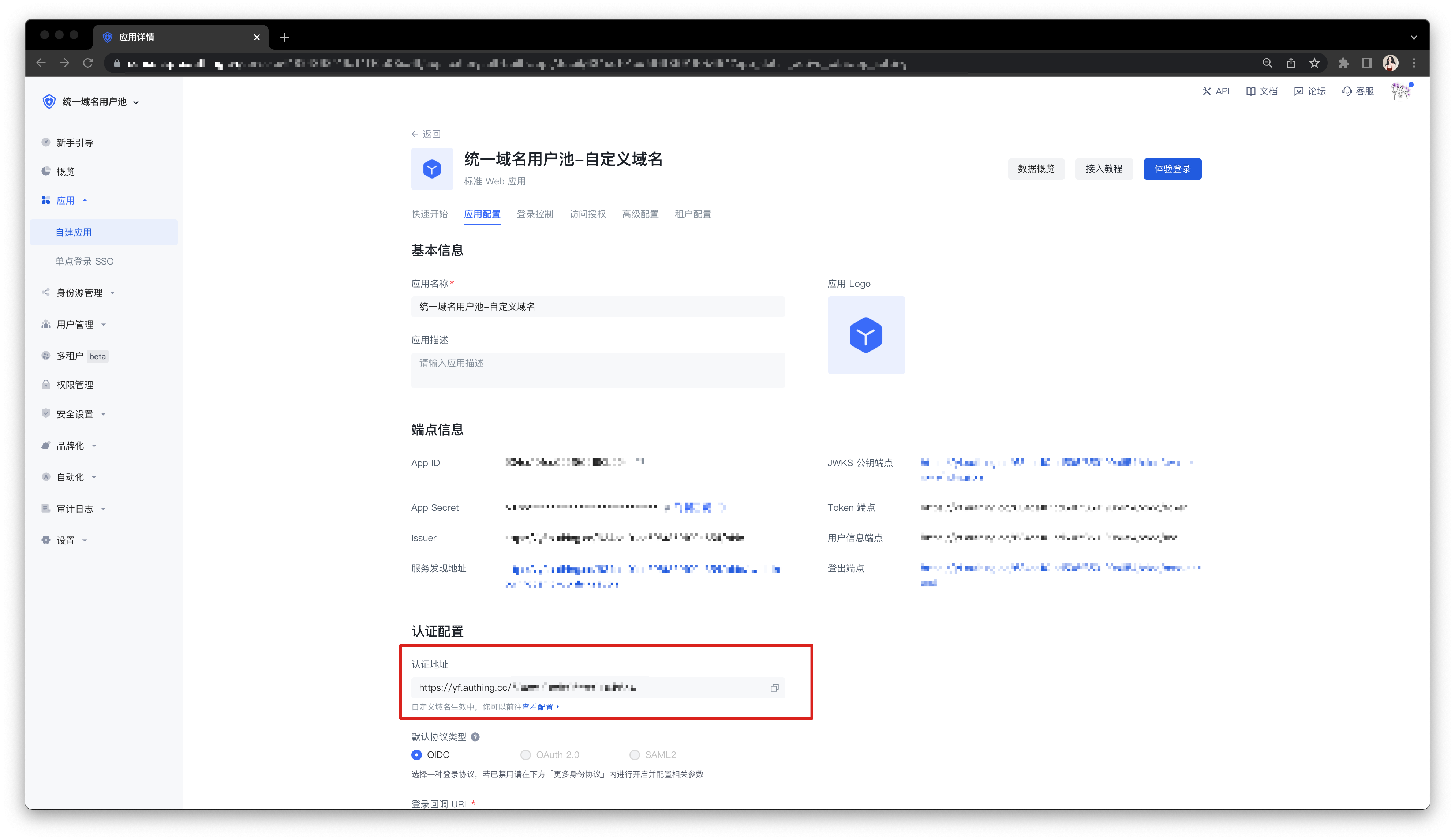
¶ When is it not recommended to use a unified domain name?
You want the third-level domain name of each application to be customized.
You accept the use of the default second-level domain name of GenAuth (i.e.
.genauth.ai).
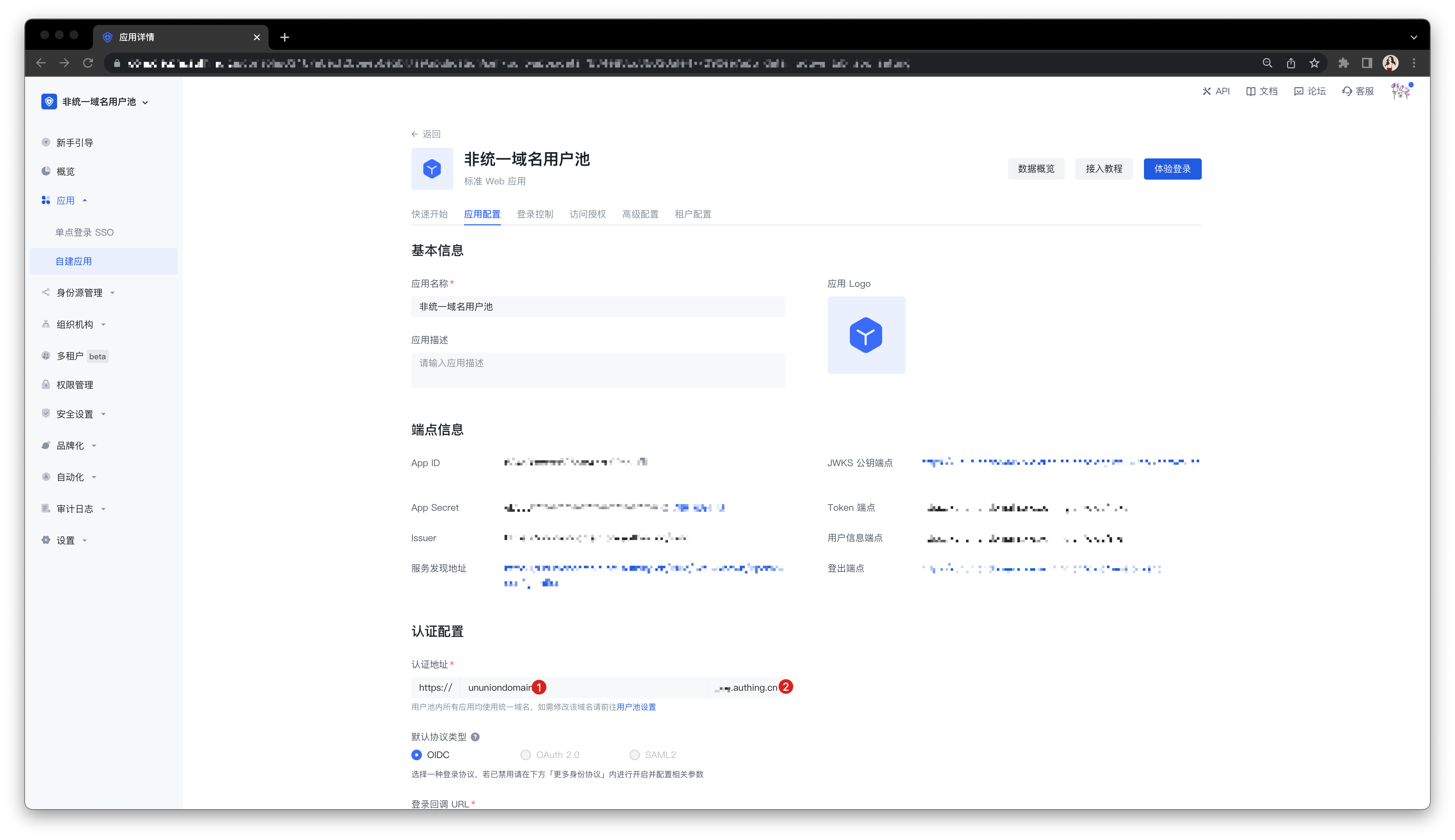
¶ Step 3: Create a user pool with a unified domain name
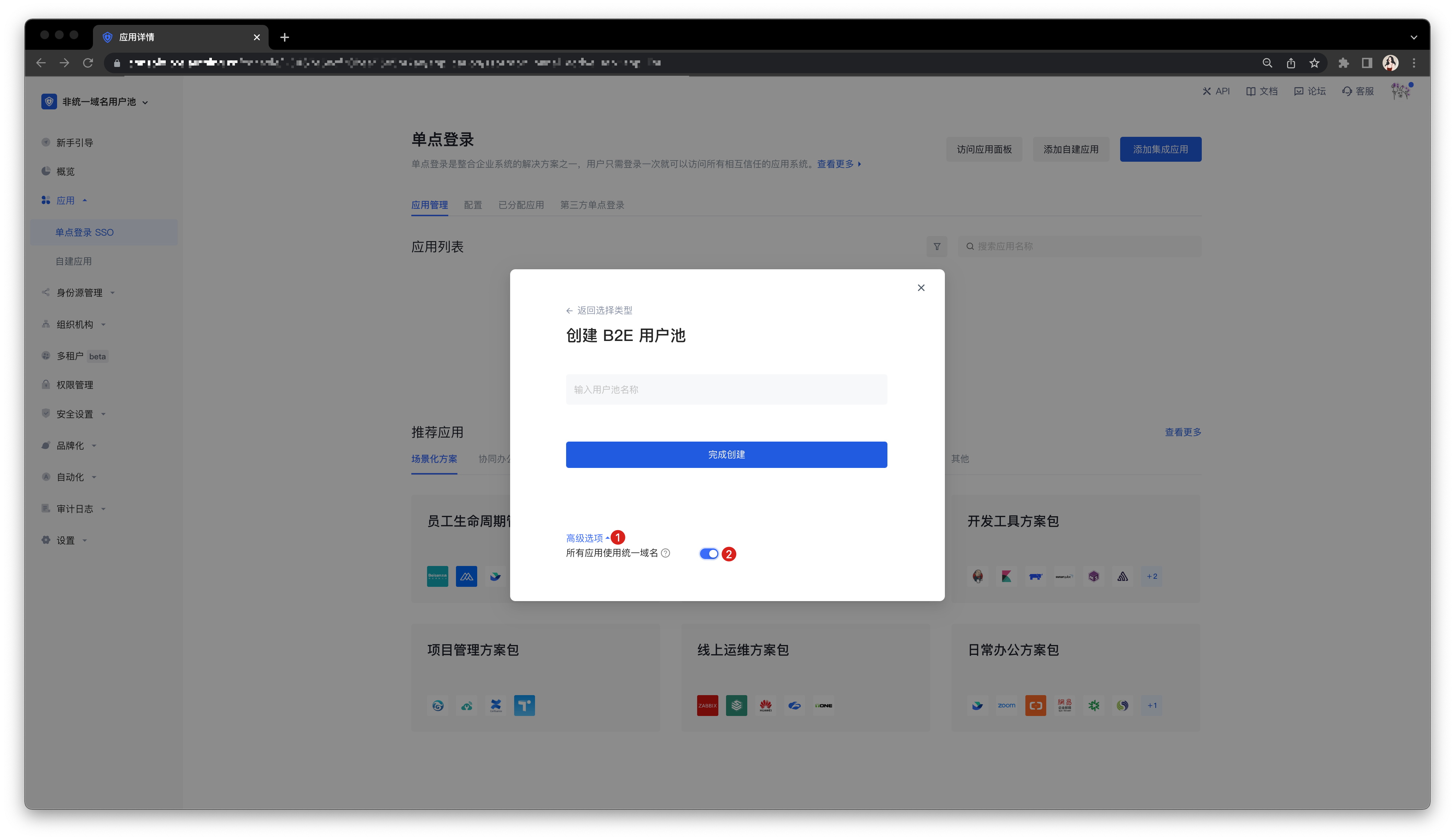
Open Advanced options when creating a user pool.
Turn on the Use unified domain name for all applications switch.
¶ Step 4: Common operations for user pools with unified domain names
Configure a custom domain name in the newly created user pool with a unified domain name:
Configuration method: Follow the instructions in Customize domain name to complete the configuration.
Implementation effect: All self-built and integrated applications in the application panel and user pool use a unified custom domain name.
Switch the existing user pool to use a unified domain name:
Create a new user pool with a unified domain name and migrate existing data.
Contact GenAuth after-sales service staff for technical support, or submit a ticket (opens new window).
